- Weight: 54 pounds
- Max load: 300 pounds
- Box dimensions: 30.3 inches (L) x 27.6 inches (W) x 19.7 inches (H)
- Warranty: Up to 12 years
- Price (at time of publish): $659
Have a More Comfortable Work Day with the Best Office Chairs for Back Pain
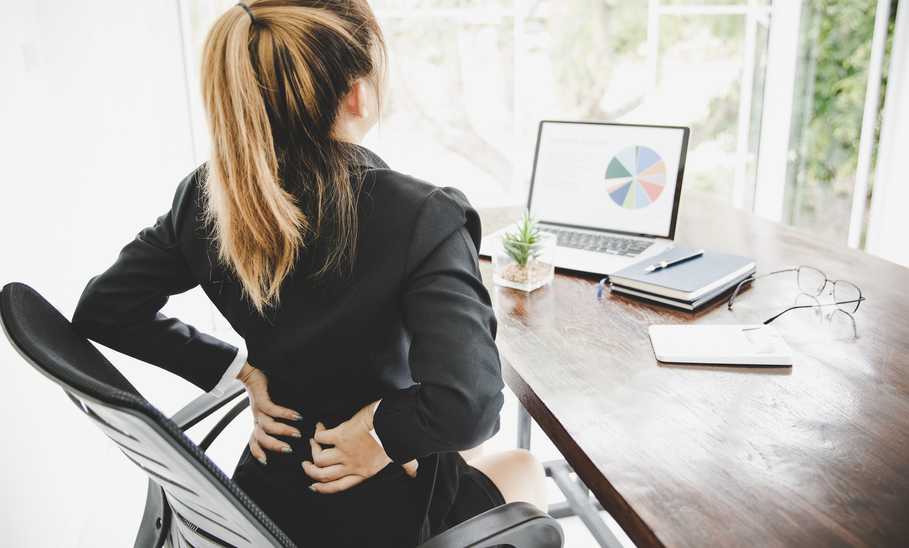
Our evaluations and opinions are not influenced by our advertising relationships, but we may earn a commission from our partners’ links. This content is created by TIME Stamped, under TIME’s direction and produced in accordance with TIME’s editorial guidelines and overseen by TIME’s editorial staff. Learn more about it.
As Americans, we spend an alarming amount of hours a day in a seated position. According to a recent study published in JAMA, which analyzed health information from nearly 6,000 individuals, about 25% reported that they are seated for more than eight hours in a single day. For the nearly 65 million Americans suffering from chronic back pain, prolonged sitting can have major consequences, as it places unnecessary strain on the back as well as the arms and legs, according to studies from UCLA Health. That’s why it’s so important to make sure you’re choosing a chair that supports this area of your body—and know how to choose the right office chair.

Whether you’re an office worker or a gamer, this chair is designed to significantly reduce your back pain by alleviating the pressure placed on your spine, including your cervical spine, thoracic spine and lumbar spine. You can adjust the backrest height in five variations to promote better posture and take off any pressure you’re feeling in your seated position. Last, but not least, it folds up for easy storage.
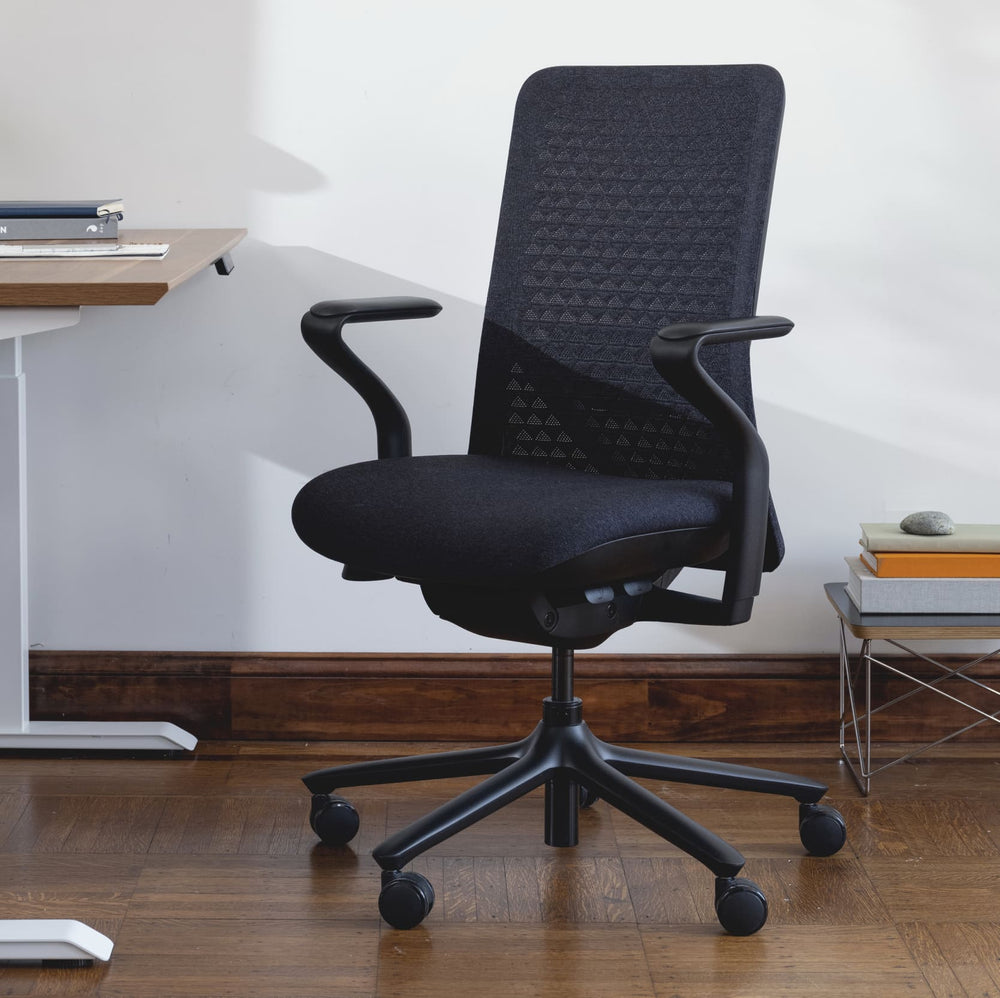
The Verve is easily adjustable and has six different ways that it can be adjusted. Being able to adjust the tilt, seat height, seat depth, armrest height, lumbar support, and tilt tension is essential to preventing low back pain, according to Wu. “The seat is made of high density foam which will contour and support your seat which can help unload spinal compression,” she says. “The chair back is also made of a 3D knit material that allows for optimal airflow.” Also worth noting: It won the California iF design award, and is praised for its combination of back pain comfort and style.

The HON ignition 2.0 is a fully adjustable office chair that caters to individuals suffering from chronic back pain. It comes with both height- and width-adjustable arms, a contoured breathable 4-way stretch mesh back that increases airflow, pneumatic seat height adjustments and it doesn’t take up too much space in your office area.
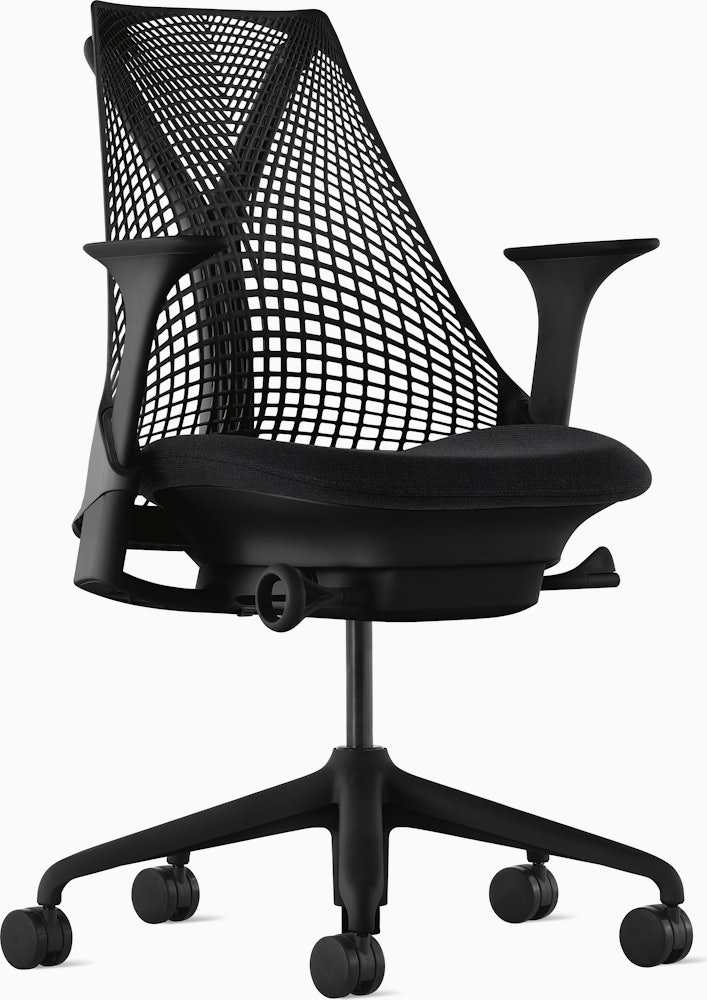
As far as adjustments go, The Sayl is equipped with pretty much everything you need to customize and help reduce back pain, including ventilated back flexes that offer free range of movement, a Harmonic Tilt, which supports natural movement and a balanced recline, and an adjustable pelvic tilt.

This chair with supportive mesh is under $200 and allows you to adjust seat height, armrests, plus tilt power for comfort. There isn't a headrest, which might be a dealbreaker for some people, but with a weight capacity of up to 331 pounds, it gets our vote for a decent office chair if your back hurts, but you're on a budget.

This office chair offers 4-way adjustable arms, each with the ability to pivot as well as alter the height, width, and depth, adjustable lumbar support and wheels so that it can be moved easily on any surface, including carpet. It’s upholstered with real Elmosoft leather, which is chrome-free and soft, and features back support that conforms to your spine for optimal flexibility and support.
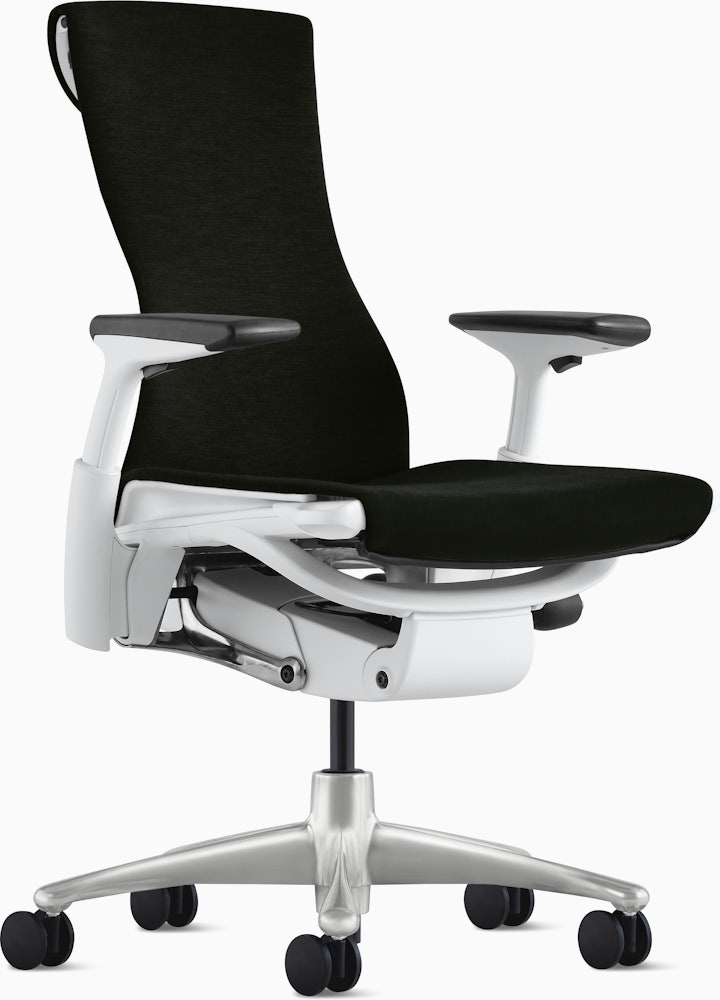
If you have a larger budget, you might as well go all in for this Herman Miller office chair. The embody offers a modern ergonomic design that allows you to adjust so many of its features, including the armrests and seat. Its four-layer seat comes with elastic suspension and supportive coils move individually to allow for full range of motion. Shopping tip: Herman Miller isn’t just for office chairs—the design-forward company also made our list for the best gaming chairs.
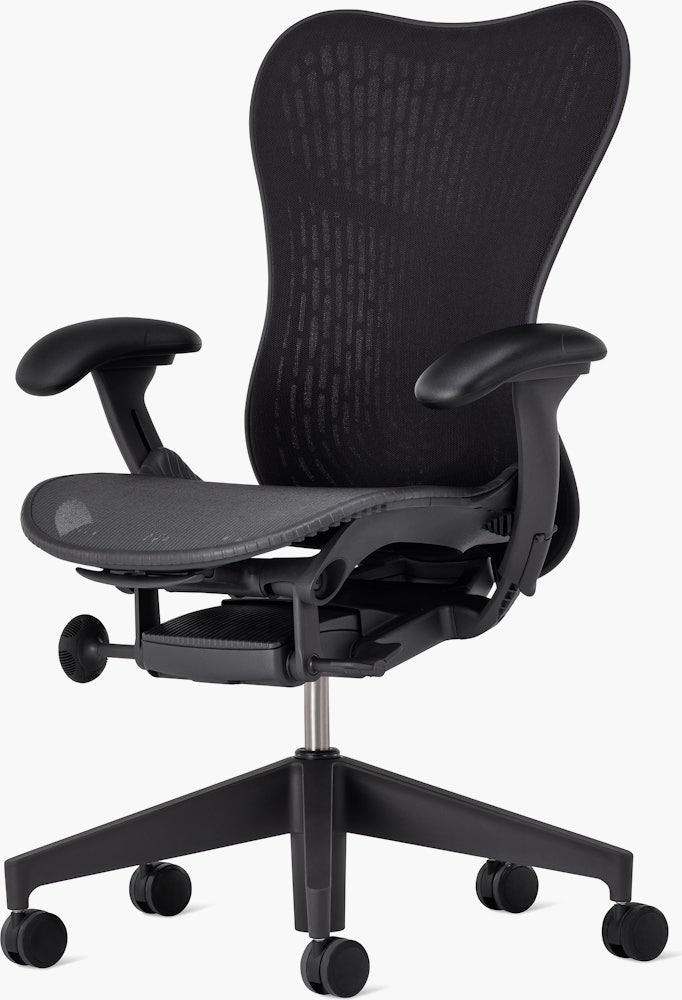
In true Herman Miller form, this chair offers all the bells and whistles, including an ultra-flexible backrest that actually adapts to your spine’s unique shape to help you maintain proper posture. It also offers supreme lumbar support and has armrests that take the pressure off your lower back. For folks seeking sustainability perks, know that this chair is made from 42 percent recycled materials and is up to 93 percent recyclable at the end of its life. It also comes with a 12-year warranty, so you know that it’s built to last.
Though the massage feature doesn’t come standard (it’s an add-on for an extra $100-150), it’s more than worth it if you experience back pain—especially lower back pain. You can choose to add either from a massage with heat, or a massage function with heat and cooling options. In addition to these features, you also have the option to purchase it with or without a headrest. The chair is, of course, great for those experiencing back and neck pain due to its ergonomic design and its Dynamic Variable Lumbar (DVL) support, which pivots as you change positions during the day. It’s on the slightly larger size, so consider your office space before you purchase.
Read our full review on the X-Basic DVL Task Chair >>
Get it here: X-Basic DVL Task Chair
As you set out to shop for the best office chair to alleviate your back pain, be sure to consider these important factors.
It’s not only the chair's dimensions that matter, but yours, too. (This is especially important if you’re buying chairs from online furniture stores, where you can’t see them in person.) As you probably know, if you’re a tall or short individual, height matters when it comes to your chair. “It is nice when you can adjust the chair to fit your specific body dimensions and have a low back support with a back that allows you to recline if desired,” says Jen Fraboni, P.T., D.P.T., creator of @jen.health and podcast co-host of @theoptimalbody.
Adjustability is also important since it is important to be able to place your feet flat on the ground, with the hips and knees bent to 90 degrees. “If the seat is too low, the knees will be higher than the hips, which can alter the position of the pelvis and cause low back pain because the lower back will be flexed or slouched,” says Dr. Karena Wu, a physical therapist and owner of ActiveCare Physical Therapy in New York City. “If the seat is too high, the knees will be lower than the hips, which can then cause too much of an arch in the lower back leading to increased low back compression.” The best ergonomic office chairs offer adjustability to customize the chair to support the ideal position for your body.
When talking about the kind of support you want to look for in an office chair to help with back pain, lumbar support sits at the top. Lumbar support provides cushioning for the low back and helps remind you to maintain the normal low-back arch which, according to Wu, can help reduce overall back pain.
Padding varies significantly when it comes to the best office chairs, with some offering extra padding built into the low back of the chair and others with adjustable settings you can turn to increase the pressure supporting your back. Having the right support from your office chair also helps ensure you maintain proper posture, which can then help reduce pressure on your spine and low back, notes Wu.
Not only will a greater seat width provide more comfort, but it will also allow for proper spinal alignment. If the seat of the chair is too narrow, you might end up with some hip pain caused by the compression of your legs.
The seat size (depth and width) of the chair is another important feature. According to Wu, the seat should be able to support your pelvis and thighs to create a good stable base. “You should be able to sit back fully in the seat so that your back will contact the chair back, with any lumbar support,” she adds.
We reached out to qualified and vetted physical therapists and even a sports scientist to get an understanding of what to look for in an office chair for individuals who suffer from back pain. We also combed through customer reviews and spoke first-hand to customers to get an idea of what they liked most from their office chairs and what specific features they sought out when shopping for one.
There is no one-size-fits-all answer to how you should sit in an office chair. Ultimately, this will look slightly different for everyone. However, Fraboni likes to recommend to her clients dealing with low back pain to experiment with their chair to find whatever position gives their body the greatest amount of ease while they work.
“Ensuring that we are sitting on our ‘sit bones’ (the knobby bones known as the ischial tuberosities) can help take pressure off our back by naturally stacking the spine,” she says. “Some people might find it more comfortable to put a pillow behind their back or under their bottom to relieve certain pressures in their body.”
The best office chair for extended sitting is one that offers variability in seating positions. This means having adjustable features for lumbar support, seat height, and seat back tilt, allowing users to change their posture easily throughout the day.
Yes, it is good to have a chair that gives a little pressure and feedback into the low back and sacral area. However, Fraboni points out that this should not be due to rounding or slouching so that your low back is then resting into the chair. “We want to find those sit bones, make sure we are sitting forward onto them, and then see if the chair presses into the low back or can be adjusted in a way that it does,” she says.
Certain office chairs have features that lend themselves to be especially beneficial for individuals suffering from chronic back pain. Many of these offer seat height adjustments, lumbar support, backrest angles, and more.
While the right office chair with a proper ergonomic setup can certainly help alleviate some of the symptoms of back pain, it will not fix an underlying back condition. One overlooked issue is the risk of neck and upper back pain, according to author and sports scientist Elesa Zehndorfer, Ph.D., which can even lead to spondylosis (a loss of cartilage lining in the vertebrae) over time. “A great ergonomically-designed chair not only mitigates this risk and also helps to support generally good posture which, long term, will lower non-specific back pain caused by poor posture,” she adds.
Using an exercise ball as an office chair can sometimes help with back pain, but it can depend on the individual, notes Fraboni. “Some people might find that sitting on an exercise ball helps them stay dynamic and supported through the core and their back, but others may not have quite the core endurance or awareness to be able to sit on an exercise ball for an extended period of time,” she says. “This might result in them assuming a rounded, unsupported position after a short amount of time.”
The information presented here is created by TIME Stamped and overseen by TIME editorial staff. To learn more, see our About Us page.



